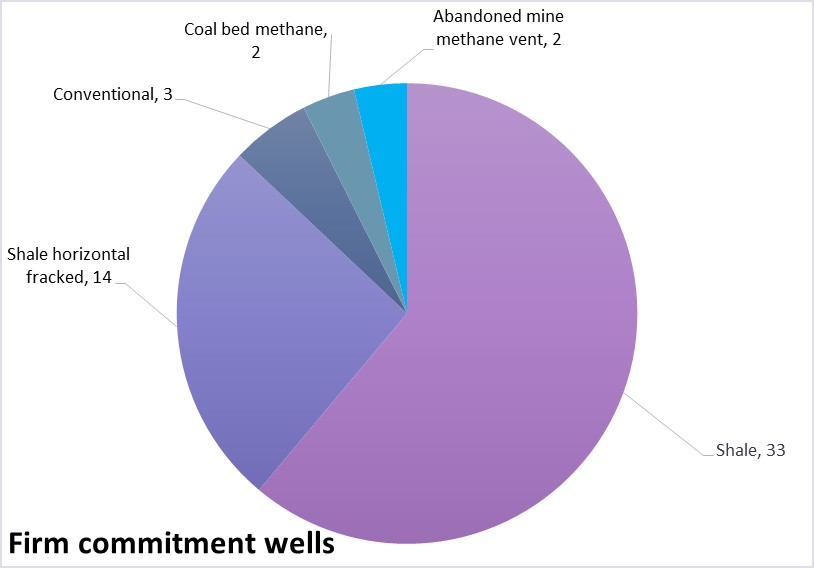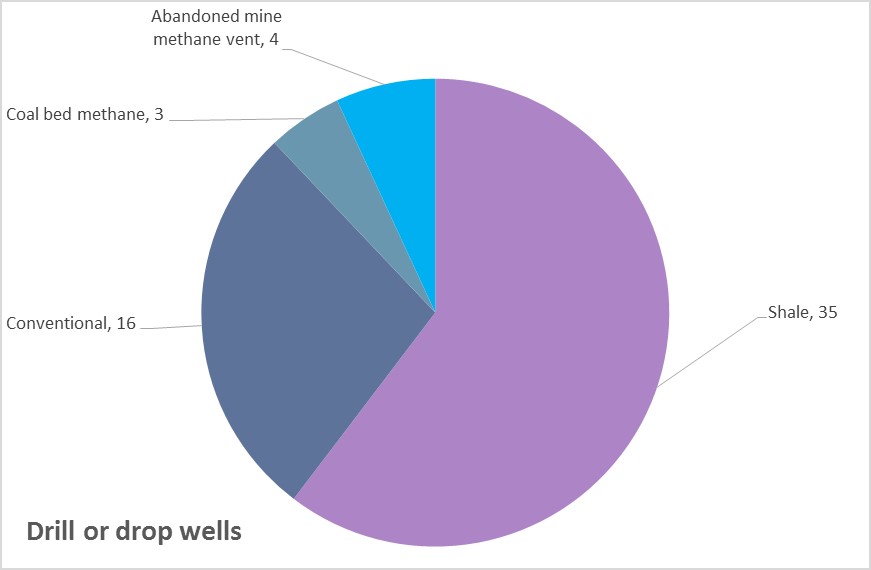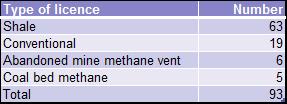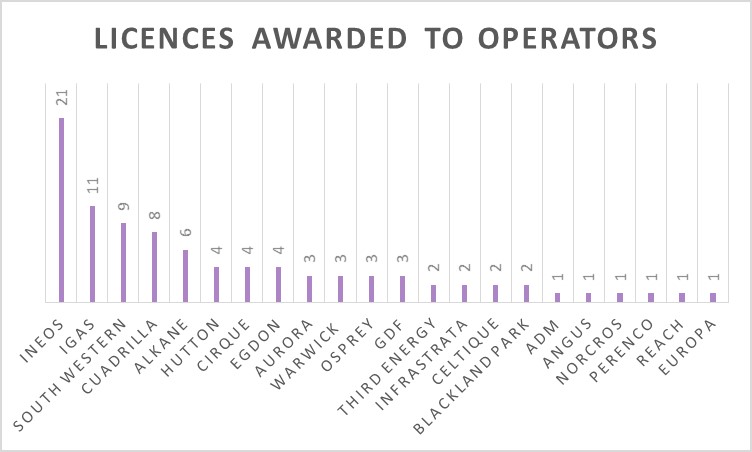DrillOrDrop has been looking in more detail at the information on new oil and gas licences released by the Oil and Gas Authority yesterday.
112 wells planned in new licence areas
England is likely to see at least 112 oil and gas wells drilled in newly licensed areas by the end of the decade.
According the Oil and Gas Authority, successful operators have committed to drill 54 wells in the first five-year term of their licence. Of these “firm commitment” wells, 47 will be for shale gas or oil. And of these, 14 will be horizontal fracked wells.

Another 58 wells could be sunk under a drill or drop commitment in the licence. This requires the company to at least plan to drill a well and complete it within five years or give up its licence. Of these “drill or drop” wells, 35 will be for shale gas or oil and 16 for conventional hydrocarbons.

These wells will be in addition to those drilled in existing licence areas. Operators drilled 86 wells in these areas from 2011-2015. Wells in both new and existing licence areas require planning permission and environmental consents before drilling can start.
93 new licences
Under the 14th round, 93 new onshore licences were awarded in England. They were made up of 159 blocks, most of which were about 10km2.
- 27 blocks were announced on 18th August 2015
- 132 were subject to an assessment under the Habitats Regulations and announced on 17th December 2015
No licences were issued in Wales or Scotland because responsibility for oil and gas licensing is to be devolved to the Welsh and Scottish administrations.
The 93 new licences are now added to 137 existing ones, which cover 360 blocks and were created in the previous 13 licensing rounds.
Focus on shale
More than two-thirds of the new licences awarded under the 14th round are for shale gas or oil exploration.

Applicants for a licence had to state which hydrocarbon they were mainly interested in (the “primary prospectivity”). The type of licence does not, however, prevent the successful operator from exploring for other hydrocarbons.
Who got what?
47 companies applied for licences. 22 were awarded at least one block.
The Swiss-based petrochemical group, INEOS, was the clear winner from the 14th licensing round. It was awarded 21 licence areas covering 38 licence blocks. With its existing licences, the company now has the exclusive right to explore for hydrocarbons across 1 million acres.

IGas was named as the operator of 11 licences across 17 blocks. Other successful companies included South Western, which was named as the operator of nine licences across 23 blocks, and Cuadrilla which got eight licences across 18 blocks.
All the licences awarded to INEOS and Cuadrilla were primarily to explore for shale. IGas’s licences are divided between conventional exploration and coal bed methane. South Western’s licences are divided between shale and coal bed methane. All Alkane’s licences were awarded for abandoned coal methane venting.

Two new licences for shale exploration have gone to both Third Energy, which has applied for planning permission to frack at Kirby Misperton in North Yorkshire, and Celtique, which has planning permission for a conventional well in West Sussex.
Seismic surveying
Operators of 45 new licences have made firm committed to carry out 2d seismic surveying. There were also firm commitments to do 3d seismic surveying in 33 licence areas. Most of the surveying will be in shale licence areas.
Constraints
75 of the 159 blocks have some condition that prohibits all of some activities in parts of the block.
Will there be drilling in your area
Categories: Regulation

South Western = Gerwyn Williams = UK Methane
Also Coastal Oil and Gas..sent packing from Kent!
Do We Really Want to Cut Emissions?
After the euphoria of Paris, Lord Chris Smith’s report & the recent issue of exploration licences is a welcome return to reality. Both must now be vigorously followed up by —- a dash for gas! That is if we really want to reduce world emissions.
Subsidising existing & foreseeable renewable technologies is a huge waste offering negligible environmental benefit. About as sensible as subsidising British banana plantations.
As an example from near my home in Balcombe (notorious for anti-fracking protests in 2013) a group of idealists obtained planning permission to use 19 acres of farmland for solar power generation. This they claimed could have provided the electricity requirements for a local population of 4,000. Had they sought to substitute solar power for gas as well as electricity three times the area may have been needed. How many acres would be blighted by solar panels to satisfy the energy needs of one small city of, say, 400,000? The project has now been cancelled as unviable following subsidy reduction.
Lamenting this the group say “We wanted our solar dream to inspire people all over the world, but the government have brought that dream to an end with a series of policy changes that are devastating to the community energy sector and the wider renewable energy sector in UK.”
Does anyone really believe that major polluting nations, having observed us crippling our economy with “green” subsidies, driving out our remaining industry (to pollute elsewhere)and fouling our countryside with solar panels & wind farms, will decide to follow our example? Well, do they?
Alternatively, if we, with other developed nations, can demonstrate the real economic benefits of safely developing indigenous gas & coal resources through fracking & Underground Coal Gasification ( UCG) then perhaps India & China might switch just some of their 1,617 planned NEW coal power stations to gas.
That would do more to reduce world carbon emissions than converting the whole of Britain to banana plantations, sorry, solar & wind energy.
Gas is half as polluting as coal & progress on Carbon Capture Storage could achieve further improvement. Lord Smith rightly castigates Government withdrawal of £1 billion funding for CCS. Surely just one of the £9 billion per year the Government plans to squander on “green” subsidies could be diverted to research which actually shows useful promise?
We have a choice. We can don green hair shirts, enjoy ourselves harassing gas exploration, leave the next generation with over-priced energy, & an even greater National Debt,– all in return for negligible effect on world emissions OR we can encourage a potentially safe, taxable, prosperity -enhancing industry and by our example, REALLY contribute to reducing world carbon emissions.
This will not appeal to Green Fundamentalists or companies milking green subsidies but it would produce a more prosperous Britain & a cleaner planet.